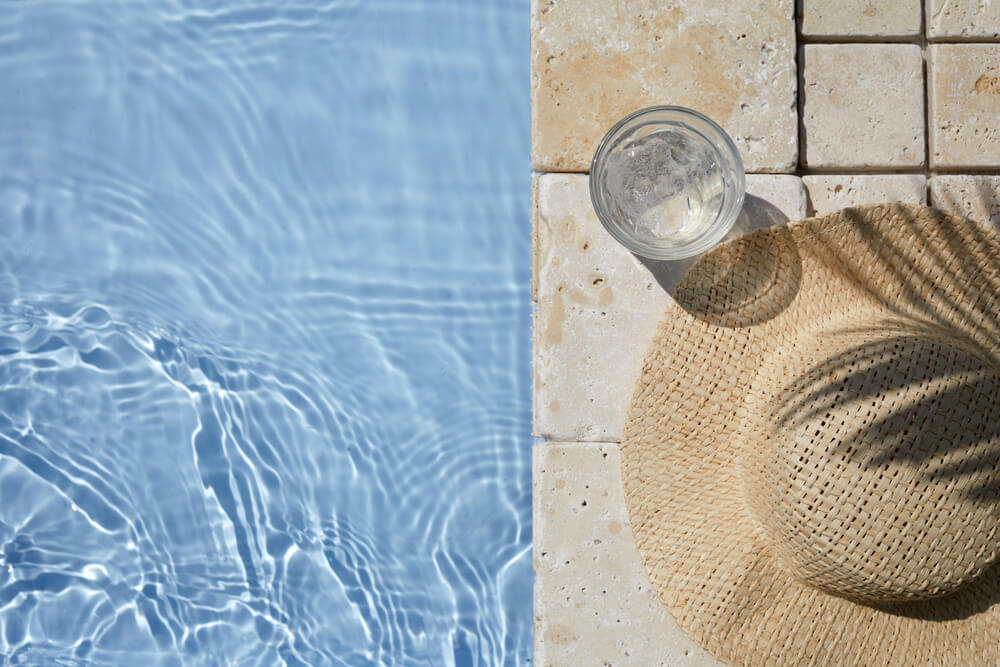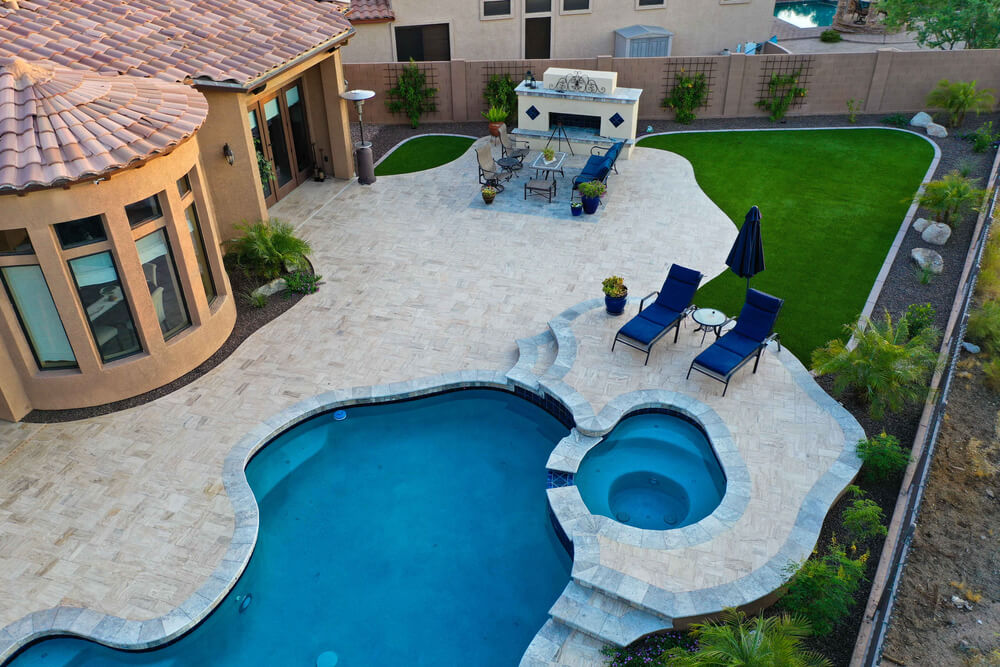Limestone and travertine tiles are pretty similar in many ways. They simply are. Firstly, they look alike. But also, there are many shared characteristics you don’t realize at first.
If you’re one of the people looking for the winner of the limestone vs. travertine battle, you’re in the right spot. We went through all the important factors that play a role in deciding the better material and put them in this blog.
You’ll need to read this article if you wish to find the material best suited for your needs. So wait no more, and start learning about limestone and travertine pavers.
If you’re looking for a paving contractor in Boca Raton, contact Cricket Paver and have an experienced team handle the job.
The Origin
We didn’t create this article without proper research. The origin of the materials plays a role in their behavior in certain situations. You need to know this when discussing limestone vs. travertine pavers.
The first thing you need to know is that both of the options are sedimentary rocks. Explaining the difference is a bit more complicated.
But, the basics rely on the fact that travertine is a pre-stage of limestone since it forms under less heat and pressure.
Limestone is formed with calcium carbonate and sediments that can be found around oceans and well-known limestone caves. Travertine, on the other hand, is formed by the precipitation of calcium carbonate.
Extreme conditions such as heat and pressure, as well as the process of formation and other environmental aspects, affect the final texture and density of the material.
Texture and Surface

The paragraph above explains the formation of these rocks. Now, you’ll see how it affects the texture of the materials.
As we mentioned, travertine goes through fewer difficulties to become what it is. Its formation process causes the rocks to have holes in the surface. This comes from air bubbles that stay trapped inside. Though this may be attractive at certain times, when using travertine tiles, filling the holes and gaps created by the bubbles is recommended. That way, the tiles will have a smoother surface and a more pleasing appearance. And you’ll stop dirt, moss, and other debris from getting inside and causing future problems.
Limestone, however, goes through a hell of a process to become what it is. It’s exposed to pressure and heat, which don’t allow for any air to be left inside. And, with no air bubbles, no holes remain in the rock or limestone pavers. This means you won’t need any filling to create a smooth surface. Limestone already has one.
Don’t overreact to the presence of holes in travertine, though. Once they are filled up, the material is just as good as limestone. So no, this one detail won’t determine the overall winner in the limestone vs. travertine battle.
Strength and Durability
We all know that no matter which type of stone you choose, you’ll need to take care of it correctly for it to last long. With proper installation and maintenance, natural materials can last for decades. Limestone and travertine are both worth considering, regardless if you’re planning to remodel a high-traffic part of your property.
However, one of them has a clear advantage in this case. Limestone is the stronger of the two materials. So limestone pavers are the ones more suitable for outdoor areas that go through a lot of traffic. Its natural characteristics make it less prone to cracks and breaks.
On the other hand, travertine pavers have a more elegant appearance but may break at times. If your eye is set on this material, your safest bet is to consider it for pool pavers, indoor flooring, or walkways.
Color and Appearance
Of course, this decision will depend on what you’re trying to achieve. All the characteristics won’t matter if you’re trying to accomplish something different. So, in the end, you’ll find the winner of the limestone vs. travertine debate.
But, to make things easier, there are differences when it comes to the appearance of the materials.
If you need more options, travertine pavers are the way to go. Travertine has plenty of variations, and its formation process causes veins and unique shades to appear on the tile surface. This material features warm yellow and cool silver tones and is usually slightly darker than the competition.
Limestone, however, offers a more subtle design. Usually, it is available in beige, white, grey, and black and is a bit lighter than travertine tiles. So, if you’re looking for something clean, this might be a perfect choice.
Travertine, on the other hand, offers a contemporary style with subtle color changes. Check your plans, and see which material is your favorite.
Maintenance
No matter which natural stone you choose, it will require a layer of sealer on top. This prevents physical damage and prevents dust, dirt, and other debris from gathering in the cracks. Travertine is no exception to this rule.
However, it is a bit more sensitive than the competition. To stay fresh, travertine requires a layer of sealer every three to four months.
Limestone doesn’t rely on sealer that much. Once you do it once, you won’t need to do much else to keep limestone pavers looking good. Water, or some mild cleaner, will be enough to keep it shining. Just remember that light colors show dirt more easily, so a quick dusting might be necessary often.
Heat Resistance

The critical piece of information here is that both materials stay cool during the hot summer days. They will be comfortable underfoot regardless of the weather. The differences come when comparing the dispersing of the heat.
Travertine absorbs the Earth’s coolness, while limestone deflects light and stays cool that way. Overall, it doesn’t make a difference to you. What matters is your feet will stay comfortable with both options.
Applications
As you know by now, the usage of materials depends on a few of their characteristics. Durability, functionality, and appearance seem to be the deciding factor of most clients.
Travertine of certain finishes is recommended for indoor floors, but both of these materials can be used outside when installed properly.
The important part that often gets overlooked is sealing and maintenance. This can determine the longevity of your choice in many ways. So, if you wish to keep the tiles for a long time, ensure you work with experts.
Conclusion
There is no right or wrong choice when picking one of these two options. They have many similar characteristics and a few significant differences. It is up to you to decide which style is more attractive and suits your remodel plan.
Also, working with highly trained professionals can make the biggest difference in the end. Cricket Pavers outdoor living company is here to provide you with high-quality work and help you find the right materials for your home. Give us a call and consult our team before making a final decision.




